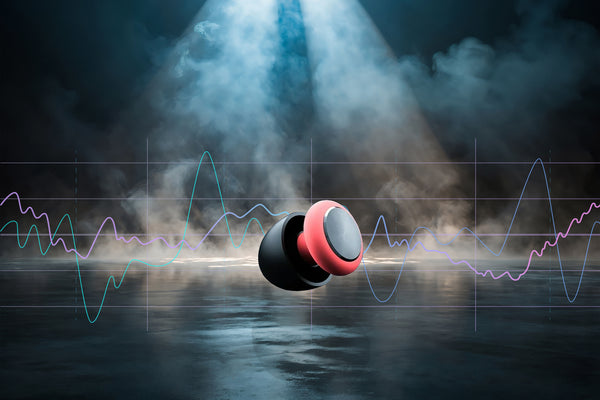Hearing Loss vs. Ear Fatigue: What’s the Difference?
Not All Hearing Problems Are Permanent
Many musicians and audio professionals experience temporary hearing issues after long rehearsals, performances, or studio sessions. But not all sound-related problems are the same—ear fatigue and hearing loss are two different conditions, and knowing the difference is crucial for prevention and treatment.
While ear fatigue is temporary and reversible, hearing loss is often permanent and progressive. Understanding the symptoms and causes of both can help musicians protect their ears and preserve their craft for a lifetime.
What Is Ear Fatigue?
Ear fatigue occurs when the tiny hair cells (stereocilia) in the inner ear become overstimulated after prolonged sound exposure. It causes a temporary reduction in hearing sensitivity, making sounds seem dull, muffled, or distant.
Symptoms of Ear Fatigue:
-
Sounds become dull or muffled after extended listening.
-
High frequencies feel “washed out” or less defined.
-
Ears feel tired or overworked but return to normal after rest.
- Difficulty balancing levels in a mix due to sound perception changes.
Common Causes of Ear Fatigue:
🔊 Extended exposure to loud sounds (concerts, rehearsals, mixing sessions).
🎧 Listening at high volumes through headphones or monitors.
⏳ Lack of breaks in long practice or performance sessions.
What Is Noise-Induced Hearing Loss (NIHL)?
Noise-induced hearing loss (NIHL) is permanent damage to the inner ear caused by repeated exposure to loud sounds over time. Unlike ear fatigue, this damage does not heal and often worsens with continued exposure.
Symptoms of NIHL:
-
Persistent ringing or buzzing in the ears (tinnitus).
-
Difficulty hearing high frequencies, like consonants in speech.
-
Music and voices sound distorted or unclear.
- Gradual hearing decline that doesn’t improve with rest.
Common Causes of NIHL:
🎤 Years of performing in loud environments without hearing protection.
📢 Standing too close to speakers or amplifiers.
🎧 Overuse of high-volume headphones or in-ear monitors.
⏳ Long-term exposure to noise levels exceeding 85 dB.
Key Differences Between Ear Fatigue & Hearing Loss
|
Factor |
Ear Fatigue |
Hearing Loss |
|
Reversible? |
✅ Yes (temporary) |
❌ No (permanent) |
|
Symptoms Improve With Rest? |
✅ Yes |
❌ No |
|
Common in Musicians? |
✅ Yes |
✅ Yes |
|
Can Be Prevented? |
✅ Yes |
✅ Yes, but only before permanent damage occurs |
|
Requires Medical Attention? |
❌ No |
✅ Yes, if symptoms persist |
How to Prevent Both Conditions
-
Use High-Fidelity Earplugs – Protects hearing while maintaining sound clarity.
-
Take Regular Breaks – Follow the "60/10 rule" (60 minutes of listening, 10 minutes of silence).
-
Keep Volume Levels in Check – Reduce monitor, headphone, and amp levels to safe listening ranges.
- Get Your Hearing Tested – Regular screenings can detect early signs of damage before it becomes permanent.
Listen Smarter, Play Longer
Understanding the difference between temporary ear fatigue and permanent hearing loss can help musicians take proactive steps to protect their hearing.
Your ears are your most valuable instrument—treat them with care.
Listen smart. Protect your sound. Grab Your Spares.

